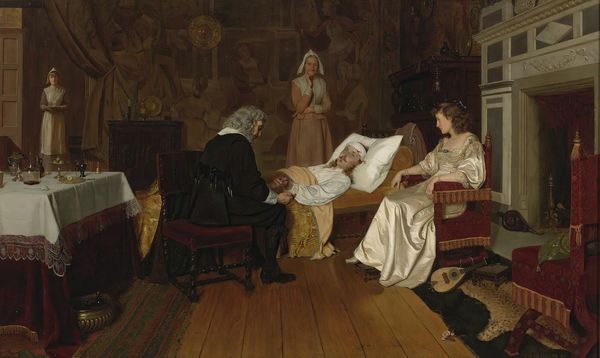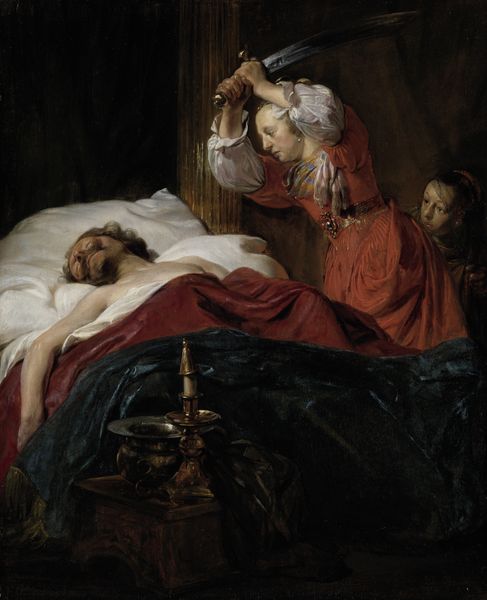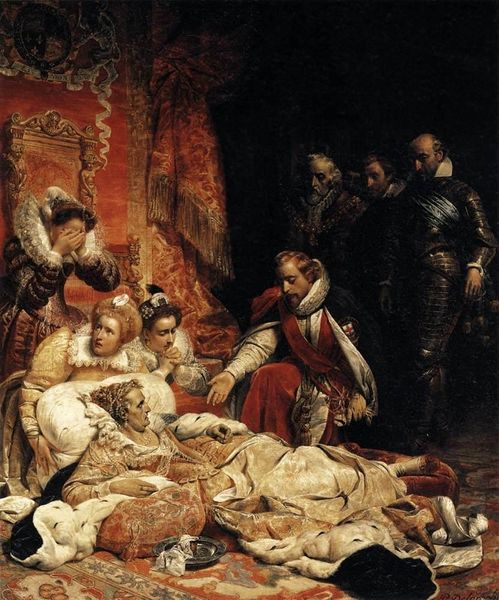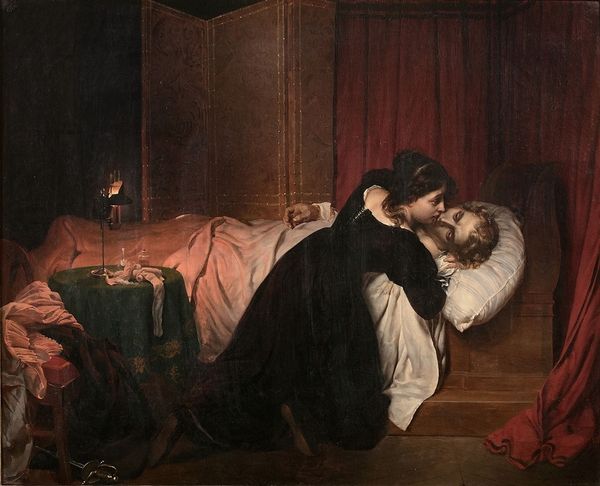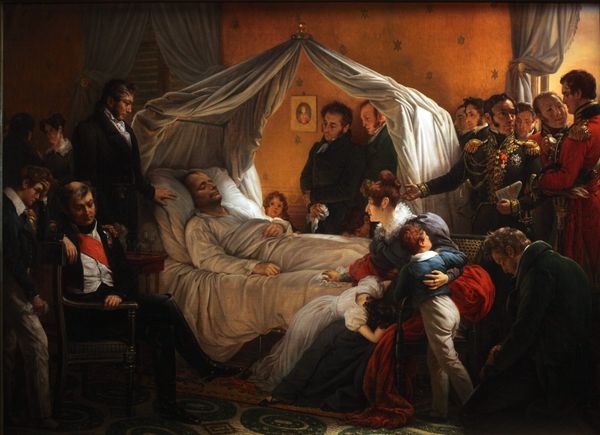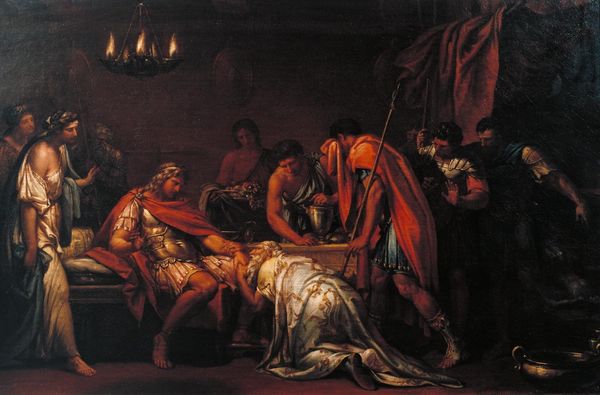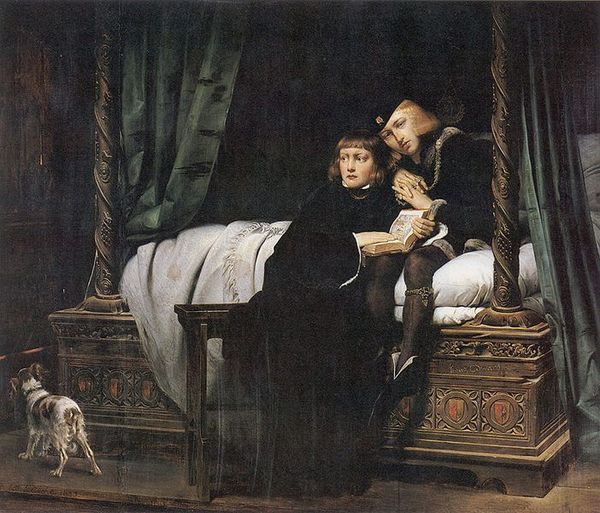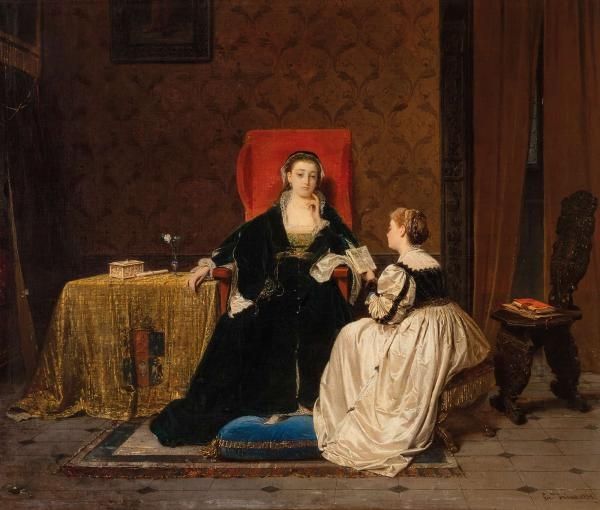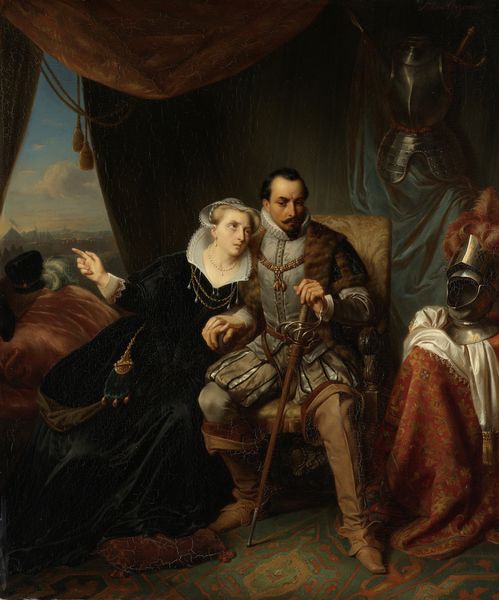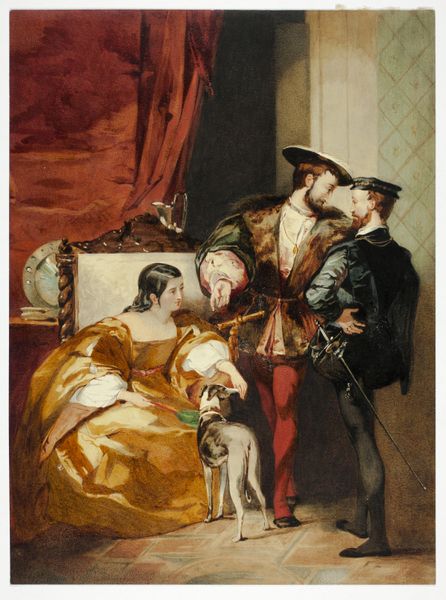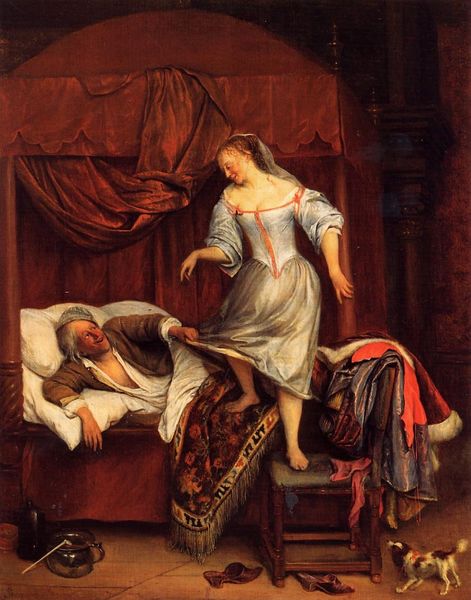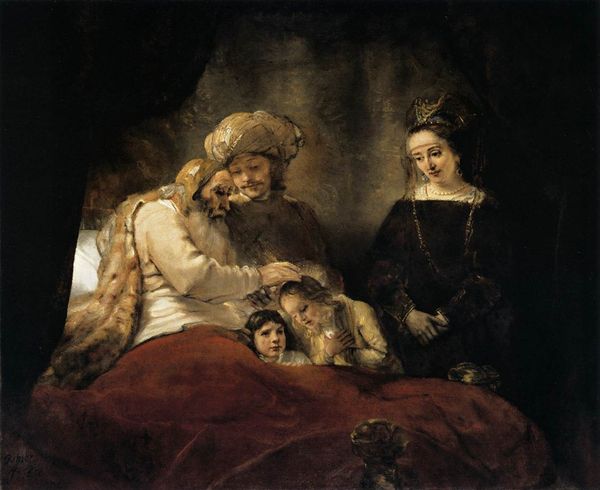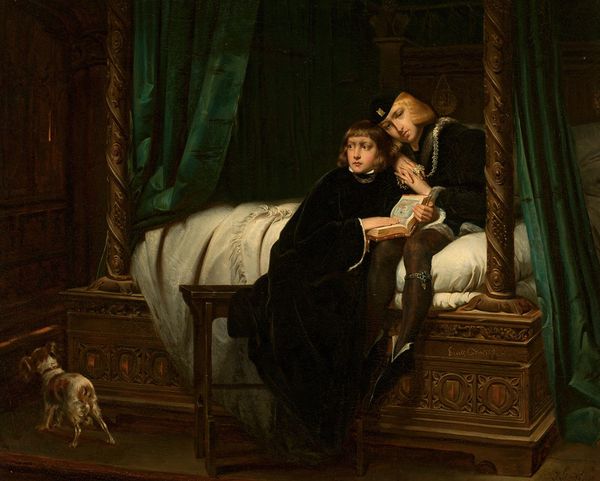
Copyright: Public Domain: Artvee
Curator: Welcome. The piece before you is Józef Simmler's "Death of Barbara Radziwiłł," completed in 1860, a painting executed with oil paint. Editor: It strikes me first with its melancholic weight, its deep hues creating a sense of intimacy but also, isolation. The dramatic light really emphasizes the stillness of the scene. Curator: Simmler delves into a pivotal moment in Polish history. Barbara's untimely death sparked accusations of poisoning, forever casting a shadow over the reign of her husband, King Sigismund Augustus. The furrows on the King’s face mirror the weight of dynastic legacy, love, and imminent scandal, don’t you think? Editor: Undeniably. His posture and expression are heavy with sorrow, but the arrangement of the composition keeps our attention. The composition cleverly utilizes diagonals and receding space. Note how Barbara's lifeless form and the King's dejected pose direct our gaze inward. This draws us, the viewer, further into their private grief. Curator: The color white becomes synonymous with death in many cultures, marking a passage of transition, from this world to whatever comes next, and there it shrouds Barbara, almost giving the appearance of gentle transcendence. Editor: White also emphasizes her pallor. And that red chair; placed perfectly in the space so that it provides not just a splash of complementary color, but to me, underscores her absence from the room as the eye follows its vertical linearity, right past Barbara, and right past the viewer's perspective as well. Curator: Right; and such a deep sense of emotional impact stems not just from color, of course, but from a deep cultural familiarity. Deathbeds bear heavy weight as sites of mourning, memory, and spiritual contemplation, even to modern viewers who might find the scene foreign. Editor: The artist's employment of value to intensify that cultural symbol creates the painting's most enduring quality. By amplifying the dramatic effects of light and shadow, Simmler transforms this from history painting into emotional landscape. Curator: Exactly. Looking closely, we can see how symbols of power and mortality intertwine here. By considering that interplay between universal emotions, national tragedy and artistic skill, we reveal much more about human memory, I believe. Editor: A persuasive combination that still speaks to us, reminding us of art's capacity to capture and evoke profound sentiments long after the events depicted.
Comments
No comments
Be the first to comment and join the conversation on the ultimate creative platform.
